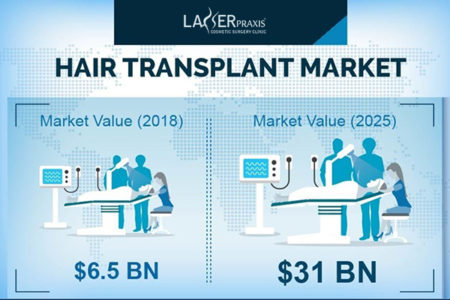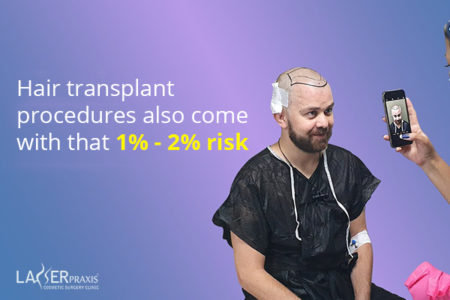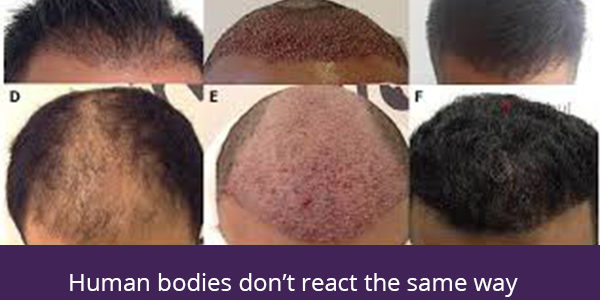Even though the hair transplant procedure has built a great market for itself, which is also ever-growing, some trepidation and reservation still surrounds it.
Should you be worried?
95%
hair follicles grow normally
Studies have shown that 85% to 95% of the hair follicles that are transplanted will take and in a few months’ time begin to grow normally.

$35 billion
by 2025
This market is set to cross $35 billion by 2025. It is growing at a very fast rate and this growth is mainly based on its success rate. The technology is becoming more and more sophisticated and recovery easier. Therefore, you need not worry about adverse reactions unless you know that your skin does not heal easily or you suffer from a skin or scalp condition which you think might get in the way.
Precautions that can be taken
There are a few things you can do to make sure you are as safe as you can be. These are the recommended practices:
⦁ Go to a doctor who you can trust. You can take a look at their history with this procedure and also see how much experience they have in the field. You are completely within your rights to do your research before paying someone to treat your condition. The more experienced the doctor is the better understanding they will have about possible complications and ways to avoid them. They will also be more strategic in their approach to the transplants.
⦁ Share any and all skin or hair conditions you have with your doctor. It is also advised to share any other medical conditions you might be suffering from just to be sure that they won’t affect the healing process, as well as any medication that you are taking.
⦁ Manage your expectations. Don’t go into the procedure thinking that you will come out with luscious hair. The transplanted follicles might take up to 9 months to grow out and you will probably need more than one session to get denser hair. Going in with level expectations will mean that you are not disappointed.
Potential Risks
As with any other medical or cosmetic procedure, in which the success rate is never 100%, hair transplant procedures also come with that 1% – 2% risk.

This blog is dedicated to the challenges and potential issues with hair transplant surgery so that you know what challenges might be if you are planning to get it.
It goes without saying though that for a more detailed discussion on risks and what the chances of those risks are for your case in particular you should consult a doctor.
The main concerns with hair transplant procedure are:
⦁ The transplanted hair not taking to the new site: This means that the hair follicles in the skin grafts taken from the donor area might become inactive. It is very common for the hair to fall out initially after surgery but in the months following the procedure, new hair will grow on the transplanted skin graft. However, if the surgery is unsuccessful this does not happen. It yields no results and the procedure will have to be carried out again.
⦁ An infection might occur: As this procedure requires healing afterwards, during the recovery period there is the chance that the healing wounds might become infected. This can result in bleeding or the scars getting bigger.
⦁ Patchy look: If the procedure hasn’t been performed strategically, it can result in the hair growing in patches. For example if the skin graft is placed in an area where the surrounding hair is still thinning, the final look will not be uniform.
⦁ Formation of small bumps: During the healing process small bumps might develop around the transplanted skin grafts. However, these will not be visible when the transplantation has been completed and the hair is denser.
⦁ Scarring: If after the skin graft has been removed from the donor area, the scalp isn’t sutured or stitched properly and the closure is too tight, the sutures can cause a scar along the edges of the incision line. If the incision is rough and skin grafts are taken in a scattered manner then too scars might form giving a rough look to the scalp.
These are the main issues that you might face. However, if you bring them up during your consultations before the procedure, they shouldn’t arise.
The best way to eliminate your trepidation surrounding this procedure is to communicate openly with your doctor and let them know about the concerns you have. They can tell you what their plan is to avoid any situation of this kind which will tell you a thing or two about their abilities and knowledge of this procedure too.

If you are approaching a doctor or clinic based on a recommendation, keep your mind open. Human bodies don’t react the same way to the same procedures. It is possible that your healing and recovery might look different.
Therefore, do your research and manage your expectations.
Good luck!





